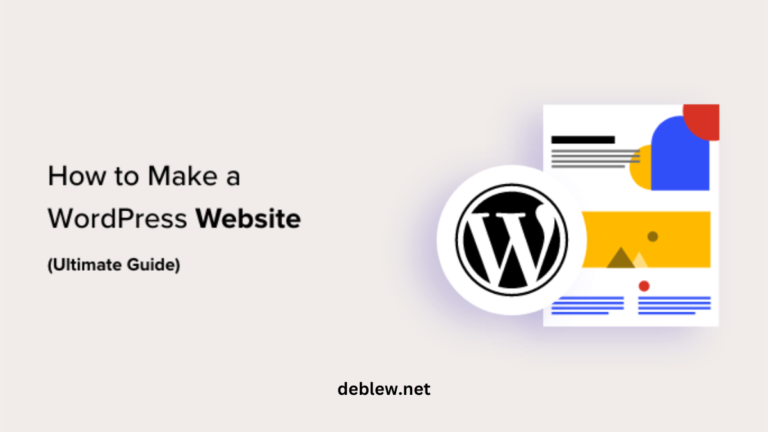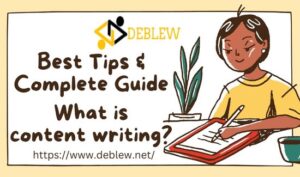Master the Art of Writing SEO-Friendly Blog Posts: From Beginners to Advanced
Welcome to the world of SEO! Writing blog posts that are optimised for search engines and attract organic traffic can be a daunting task, especially if you’re new to this area. Whether you’re a beginner or an experienced blogger, this article is here to help.
It covers everything you need to know about creating SEO-friendly blog posts, from the basics of keyword research and best practices, all the way up to advanced tactics and techniques.
Before You Start: Do Keyword Research
Writing an SEO-friendly blog post is a great way to increase the visibility of your website, improve its ranking in search engine results and drive traffic.
However, the key to success lies in carefully selecting keywords which are relevant to your content. Before you start writing any SEO-friendly blog post, take some time to do keyword research. Start by understanding what people are searching for and how often they’re searching for it.
Brainstorm different keywords that relate to your topic and use tools such as Google Adwords Keyword Planner, Ahrefs, Semrush or Moz Keyword Explorer to determine which ones have the highest search volumes.
This will help you identify potential topics that can be explored through your blog post, as well as the best words or phrases to use to optimize it for search engines.
Writing Tips For Seo-Friendly Blog Posts
Writing SEO-friendly blog posts can be a great way to boost your business’s visibility on the web and increase your website’s traffic. However, many bloggers are unaware of the specific tactics they need to employ to make their blog posts search engine-optimized and friendly.
Here are some helpful tips for writing a compelling and SEO-friendly blog post:
1. Think Before You Write!
If you’re trying to create SEO-friendly blog posts, it’s important to take a few extra steps beyond merely writing the content. Writing with search engine optimization in mind is essential if you want your content to be seen by potential readers. One of the most important and effective tips for SEO-friendly blog post writing is to think before you write.
Before beginning a piece of content, consider what topics and keywords potential readers may use to find that article or post on search engines.
Strategically placing relevant words throughout your piece will help make it easier for readers or customers to locate your content on the web.
Once you have an idea of what words can be used as keywords, include them in natural places such as titles, subtitles, body text, meta descriptions and images alt texts.
2. Devise A Structure For Your Post
However, a simple writing tip to ensure that your blog post is optimized for search engine results is to devise a structure before you start writing.
Having an organized plan of attack will help you hone in on the essential elements of any successful SEO-friendly post.
Before writing anything else, it’s important to define your topic and craft an interesting headline that will draw readers in.
The headline should be short yet descriptive enough so that potential readers have an idea of what they’ll find in the article.
Once this is set, create a rough outline with topics and ideas that you want to include and establish bullet points for each section.
3. Use Paragraphs And Headings
Search engine optimization is essential to make your blog post visible and attractive to readers.
An SEO-friendly blog post needs to follow a few simple guidelines for search engine crawlers to recognize and rate it properly.
One of the most important strategies is using paragraphs and headings throughout the post.
Paragraphs are key elements when writing an SEO-friendly blog post as they help break up large blocks of text, making them easier for readers to understand.
Paragraphs also allow Google’s algorithms to easily identify each idea discussed in the essay, helping it rank higher on SERPs.
Similarly, inserting headings into an article will assist search engines in understanding its structure; this makes it easier for web crawlers to accurately categorize the content based on keywords used within these sections.
4. Use Transition Words
Good writing is essential for a successful search-engine-optimized blog post. To grab and hold readers’ attention, one effective technique is to use transition words.
Transition words are powerful tools in the writer’s arsenal that can emphasize a point and provide readers with a better understanding of the content.
The key to using them effectively is to place them at natural points within the text.
When used correctly, transition words can help transform simple sentences into more complex ones, and vice versa.
They can also be used to create a flow between paragraphs and make it easier for readers to move from one thought or idea to another.
Additionally, they provide hints as to what comes next in the discussion, making it easier for readers to anticipate future content.
This type of anticipation creates suspense and keeps people reading until the last word of your post or article!
5. Use Related Keywords
Writing a blog post that is SEO-friendly can be a challenge. But with the right strategies and tips, it can become easier to get your website or blog noticed.
One of the most important writing tips for creating an SEO-friendly blog post is to use related keywords throughout the text.
Keywords are words or phrases that a search engine uses to determine what content your website contains.
By using related keywords throughout your blog post, you make it easier for search engines to find your content and rank it higher on their results pages.
This can help bring more traffic to your website or blog as well as boost its visibility online.
To ensure you are using relevant keywords, do some research beforehand and identify which phrases people use when searching for information relating to the topic of your post.
6. Optimize The Length Of Your Article
Writing for Search Engine Optimization can help bring in more visitors to your blog. To make sure that your post is optimized for SEO, it’s important to consider the length of the article.
An effective article should not be too short or too long; the ideal length is dependent upon how much information you need to cover.
For an SEO-friendly blog post, aim for a minimum of 500 words and a maximum of 1,500 words.
Shorter articles may not provide enough relevant information to rank high on search engine results pages, while longer articles can become difficult to read and might overwhelm readers.
When writing content that’s intended for SEO purposes, ensure that your topics are well thought out and explore multiple aspects of the topic so that you can effectively fill up those 500-1,500 words without having repetition or fluff.
7. Link To Existing Content
For any successful blog post, it is important to avoid content duplication. Having multiple copies of the same article or information can create confusion and result in a poor user experience.
This can also cause Google to penalize your website for having duplicate content, resulting in a lower ranking in search engine results pages (SERPs).
To ensure that you are creating an SEO-friendly blog post, the writing tip to keep in mind is to link to existing content whenever possible.
Linking to other relevant articles on your website not only helps readers learn more about a particular topic but also provides additional context for the topics you write about.
Furthermore, linking out sends strong signals to search engines that your website is up-to-date with current information and provides valuable insights from other related sources.
8. Let Other People Read Your Post
Writing a blog post for search engine optimization, or search engine optimization is one of the best ways to increase your website’s visibility.
The key to writing an SEO-friendly post is to make sure it reads well and can be understood by everyone who visits your website.
One way to ensure that readers can understand what you’re writing is to let other people read your post before you publish it.
This simple step can help you identify any typos or grammar errors that may make your content difficult for readers to understand.
Asking someone else for input also helps ensure that the message of your post is clear and easy to understand.
Additionally, if they point out any areas where they were confused while reading it, this will allow you to rephrase or restructure those parts so that they are more straightforward for people to comprehend.
9. Post Title And Meta Title
Having a great post title and meta title for your blog posts is an essential part of creating SEO-friendly content.
A catchy post title can help draw readers’ attention, while the meta title is important for search engine optimization.
Writing a post title and meta title that is both effective is no easy task, but there are a few tips you can follow to make sure your titles are optimized for SEO success.
First and foremost, try to keep the length of your post titles to 65 characters or fewer.
This ensures that your entire message fits into most search engines’ display limits, so it won’t get cut off in search results.
Additionally, make sure you use relevant keywords that accurately describe the content of the blog post in both the post title and meta title.
10. Post Title Description
Post Title Description is the Writing Tip For a Seo-Friendly Blog Post. Writing SEO-friendly blog post titles can be a challenge, but it’s important if you want your posts to be found on search engines.
A post title description should accurately describe what the post is about and include relevant keywords that will help search engine crawlers find it in searches.
It should also be short enough to fit into Twitter or other social media, yet long enough for readers to get an idea of what the post is about before they click through.
When crafting a title description for your blog posts, keep in mind that you want to capture attention and draw readers in while still being descriptive and keyword-rich.
Try to use action words that spark curiosity and leave the reader wanting more information.
11. Keep Paragraphs Short
As a blog writer, it is important to keep in mind that SEO-friendly writing can help your blog reach more readers and draw them in. One of the best tips for creating an SEO-friendly blog post is to keep your paragraphs short.
Short paragraphs make your text easier to read, especially on mobile devices, which are becoming increasingly popular for reading online content.
When keeping paragraphs short, aim for around two to three sentences each. This allows readers to quickly scan through a post and skim over any unnecessary details without skipping important information.
Keeping your paragraphs concise also helps you remain focused when conveying key points about a topic or subject matter. Organizing your thoughts into small bitesize chunks helps make it easier on the reader’s eyes when reading from start to finish.
12. Use Image Alt Tag
Creating blog posts that are SEO-friendly can seem like a challenge, but following just one simple tip can make all the difference.
Using image alt tags is a great way to optimize blog posts for search engine optimization (SEO).
Alt tags allow web crawlers to accurately understand what an image is about and how it should be indexed in search engines.
Using alt tags also helps visually impaired people using screen readers, as they will be able to read what the image is about without having to see it.
Additionally, if for some reason the browser isn’t able to load the images on your website, those with disabilities will still be able to access information from your page by reading the alt tag descriptions.
Alt tags also help compensate for slow loading times or any other issues your images may experience when being accessed online.
13. Use Visual Content
Gone are the days of blog posts consisting of mere words. In today’s age, readers need more than just text to keep their attention.
Visual content is a great tool writers can use to make posts more engaging and effective.
Incorporating visuals into writing can help to create SEO-friendly blog posts that will draw in more readers and engage them for a longer time.
Visual content is becoming increasingly important when it comes to SEO as images, infographics, videos, etc., give search engines additional information about your post that goes beyond just the text within it.
For example, you can use meta tags such as alt tags for images or add captions to videos so that search engine crawlers will have an easier time understanding what your post is about.
FAQs
How do I learn SEO content writing?
SEO content writing is a skill that can be learned with practice and dedication.
Start by researching the basics of SEO, such as keyword research and optimization techniques.
Then, practice writing content with SEO in mind, focusing on topics relevant to your industry.
Finally, review your work for accuracy and readability. With consistent effort and feedback from experts in the field, you’ll soon become an expert SEO content writer!
Can I do SEO by myself?
Yes, you can do SEO by yourself if you have the time and knowledge to do so.
You’ll need to research and understand the basics of SEO, such as keyword research, content optimization, link building, and technical SEO.
Once you’re familiar with these concepts, you can start implementing them on your website.
However, if you don’t have the time or resources to handle SEO yourself, it’s best to hire a professional.
Can I learn SEO in 2 months?
Yes, you can learn the fundamentals of SEO in 2 months.
You can start by reading up on the basics of SEO and familiarizing yourself with the tools available to help optimize your website.
Additionally, practice by optimizing your website or a friend’s website to gain hands-on experience.
Finally, join an online community like Quora to ask questions and learn from experienced SEO professionals.
What are keywords in SEO for beginners?
Keywords in SEO are words or phrases that describe the content of a website. They are used by search engines to understand what a website is about and to determine which websites to display in search results.
Keywords should be specific, relevant, and targeted to the topic of the website. When choosing keywords, beginners should consider their audience and use keywords that will help them attract their target audience.
How do I become an SEO expert with no experience?
Start by learning the basics of SEO. Read articles, watch tutorials, and take online courses to understand how SEO works and how it can be used to improve website rankings.
Once you have a good understanding of the fundamentals, create a portfolio of SEO projects that demonstrate your knowledge and skills. Finally, network with other SEO experts to gain experience and develop your career.
Can I learn SEO without coding?
Yes, you can learn SEO without coding. SEO is mainly focused on optimizing content and website structure to make it more visible in search engine results.
You will need to understand the basics of HTML and CSS, but you don’t need to be a programmer to learn SEO.
Many online resources can help you get started with SEO, such as tutorials, blogs and forums.
Final Thoughts
In conclusion, writing SEO-friendly blog posts is a great way to make your content more visible to users and increase traffic to your website. With some basic knowledge, you can start writing effective content that is optimized for search engines.
By doing keyword research, outlining the post structure, and optimizing titles and meta descriptions, you can create blog posts that are optimized for SEO success.
Additionally, you can use advanced techniques to further optimize your content and rank higher in search engine results pages.







rhoSt MapQt stdvLjC hdPvmhRA kSalm